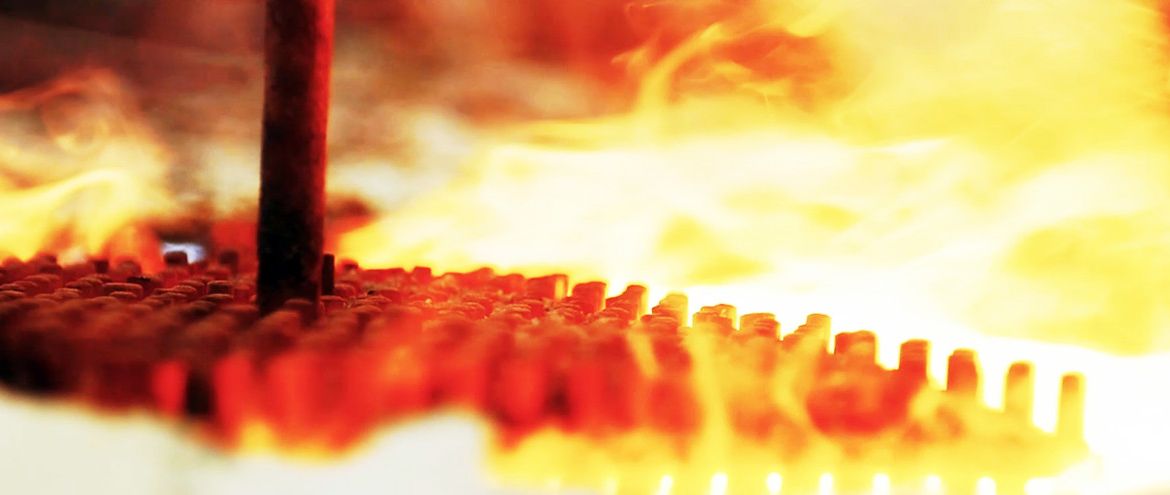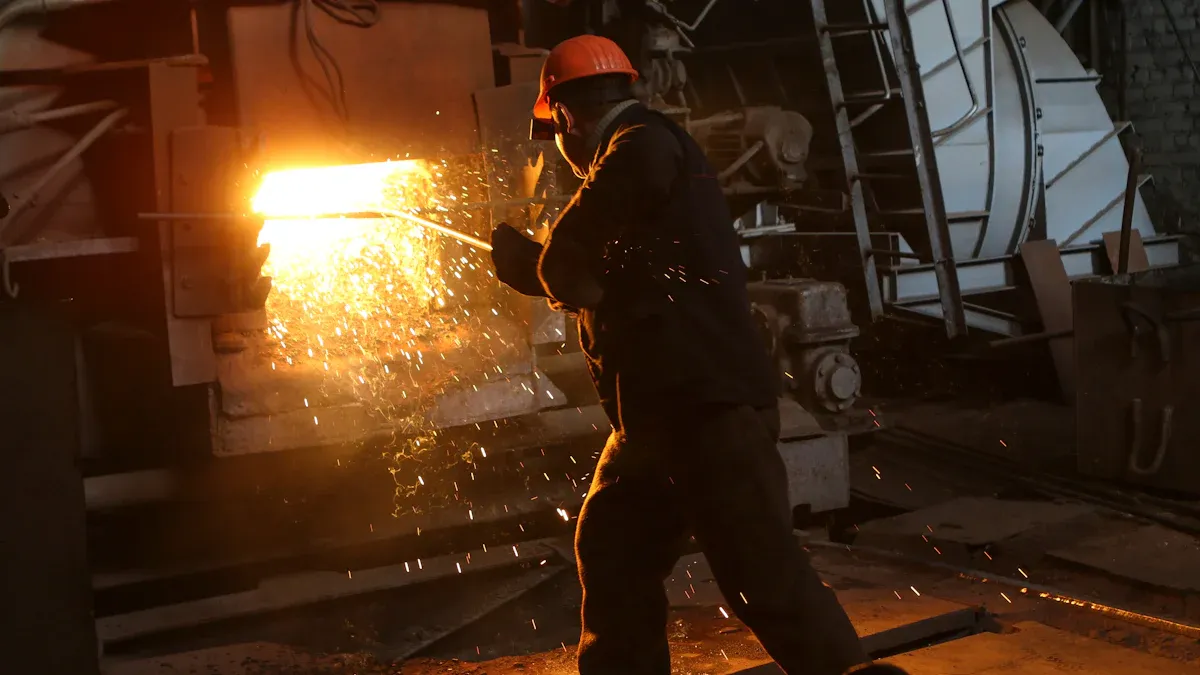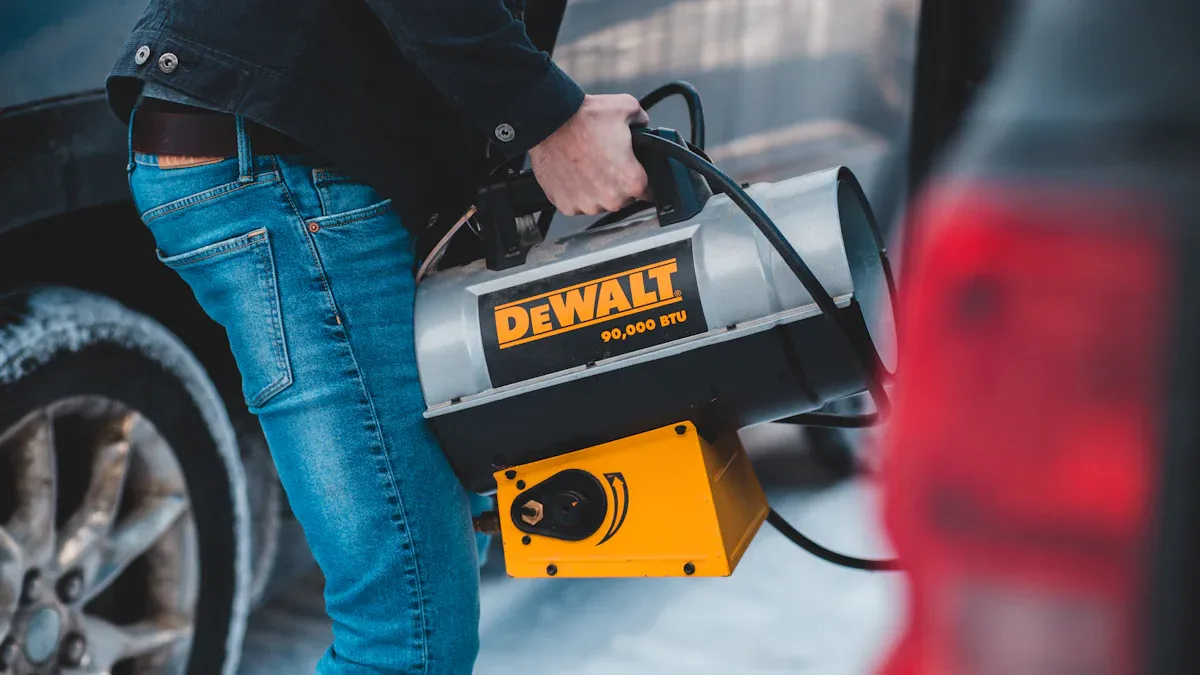

You can make surface preparation and repairs much easier by using industrial heating tools. These tools let you control heat very well. You can set the temperature where you need it. Controlled heating helps you not damage materials. You finish jobs faster and keep your work safe. This way helps you work better and get good results.
Industrial Heating Tools for Surface Preparation

Fast Coating and Adhesive Removal
Industrial heating tools help you take off coatings and adhesives fast. You can set the temperature so you do not hurt the surface. A heat gun makes paint or glue soft. You can pull off old layers without scraping hard. You do not need strong chemicals. This way makes surface preparation easier and safer. You finish faster and keep the material strong.
Tip: Try the heat setting on a small spot first. This helps you not overheat and keeps the surface safe.
Cleaning and Degreasing
Industrial heating tools help you clean and remove grease before repairs. Heat breaks down oils and dirt. You can wipe them away easily. This works for metal, plastic, and other things. You get a clean surface for the next step. Controlled heating means you do not bend or weaken the material. You keep the process safe and useful.
- You save time because heat loosens tough dirt.
- You use fewer strong cleaning chemicals.
- You get surfaces ready for painting, bonding, or coating.
Surface Activation
Industrial heating tools can make surfaces ready for bonding or coating. Heat changes the surface so it works better for the next step. You might use a heat gun on plastic or metal. This helps adhesives stick and coatings stay on. You need to control the temperature. You do not damage the material and you get better results.
Note: Heat treatment can make some materials stronger and last longer. You get repairs or finishes that stay good for more time.
Streamlining Repairs with Heating Tools


Material Softening
You often need to soften materials before you start a repair. Industrial heating tools help you do this quickly. When you use a heat gun, you can make plastic, rubber, or even metal more flexible. This makes it easier to shape or remove damaged parts. You do not need to use force or sharp tools. You lower the risk of breaking or cracking the material. You also save time because the heat works fast.
- You can soften old sealants for easy removal.
- You can bend pipes or sheets without causing damage.
- You can prepare surfaces for bonding or welding.
Tip: Always test the heat on a small area first. This helps you avoid overheating and keeps the material safe.
Soldering and Welding
You use industrial heating tools for many repair jobs that need soldering or welding. A heat gun can help you melt solder and join wires or metal pieces. You get strong connections that last. You can also use these tools to preheat surfaces before welding. This reduces the chance of cracks and makes the weld stronger.
You control the temperature, so you do not burn or weaken the material. You get better results and safer repairs. You can use these tools for many applications, from fixing pipes to joining electrical parts.
- You make quick repairs on metal surfaces.
- You join wires without damaging insulation.
- You improve the quality of welds by preheating.
Note: Always wear safety gear when you work with heat. This protects you from burns and keeps your repair safe.
Reducing Downtime
You want to finish repairs fast and get equipment back to work. Industrial heating tools help you do this. You can speed up drying times for adhesives or coatings. You can cure materials faster and move to the next step without waiting. You reduce downtime and keep your projects on schedule.
You also avoid delays caused by slow manual methods. You get consistent results every time. You keep your work area safe because you do not need harsh chemicals or open flames.
- You finish repairs in less time.
- You keep machines and tools running.
- You improve safety and efficiency.
Callout: Fast repairs mean less waiting and more productivity. You keep your business moving forward.
Comparing Heating Tools and Traditional Methods
Time and Consistency
You want to finish your work quickly and get the same results every time. Industrial heating tools help you do this. When you use a heat gun, you can remove paint or soften glue in minutes. Traditional methods, like scraping or using chemicals, often take much longer. You may also get uneven results with those old ways. With controlled heat, you can repeat the same process and get a smooth finish each time.
- You save time on every project.
- You avoid waiting for chemicals to work.
- You get even results across the whole surface.
Tip: Try using a timer when you use heating tools. This helps you keep your work steady and consistent.
Safety and Damage Prevention
You need to keep your workspace safe and protect your materials. Traditional methods can bring risks. Sharp tools might slip and cause injury. Strong chemicals can harm your skin or eyes. Industrial heating tools give you more control. You can set the temperature and avoid overheating. This lowers the chance of burns or damage to the surface.
- You do not need to use harsh chemicals.
- You reduce the risk of accidents.
- You protect the material from cracks or burns.
Note: Always wear gloves and safety glasses when you use any heating tool.
Versatility
You can use heating tools for many jobs. You might need to remove old coatings, clean surfaces, or prepare for a new application. Traditional methods often need different tools for each task. With one heat gun, you can handle many steps in your project. You can work on metal, plastic, or even wood. This makes your work easier and helps you finish more jobs with less effort.
- You use one tool for many tasks.
- You switch between jobs without changing equipment.
- You work on different materials with the same tool.
Callout: Versatile tools help you save space and money in your workshop.
Choosing and Using Industrial Heating Tools
Selecting the Right Tool
You need to pick the best industrial heating tools for your job. Start by thinking about the material you want to work with. Some surfaces need gentle heat, while others can handle higher temperatures. If you plan to remove paint or soften glue, a heat gun works well. For tasks like curing adhesives or coatings, choose a tool that lets you control the temperature closely. You should also look at the size of the area. Large surfaces may need bigger tools, while small spots need more precise ones.
Tip: Always check the tool’s settings before you begin. This helps you avoid overheating and keeps your project safe.
You can find innovative solutions for special jobs. For example, some products help with curing repairs in tough environments. These tools make each application easier and more reliable.
Best Practices
You want to use industrial heating tools safely and get the best results. Always wear gloves and safety glasses when you work with heat. Test the tool on a small area first. This helps you see how the material reacts. Move the heat gun slowly and keep it at the right distance. You avoid burning or damaging the surface.
When you work with adhesives or coatings, follow the curing instructions. Some materials need a certain temperature and time to cure properly. If you rush the process, you may get weak bonds or poor finishes. You should also keep your workspace clean. Dust and dirt can affect curing and make repairs less strong.
- Read the manual for each tool.
- Use the right temperature for each application.
- Let materials cool down after curing.
Note: Good curing makes your repairs last longer and keeps surfaces strong.
You can make your work easier and safer with industrial heating tools. These tools help you finish repairs quickly and keep surfaces strong. You use a heat gun for many jobs, from cleaning to heat curing. Forced curing lets you speed up repairs and get back to work faster. You gain more control, better results, and less risk. Try these tools for your next project and see the difference.

